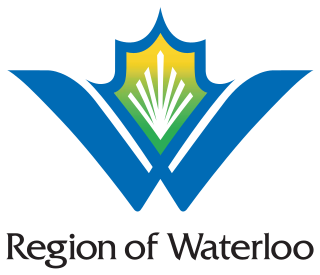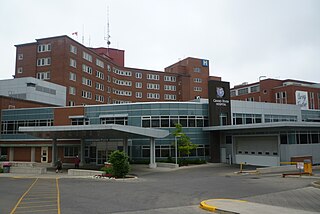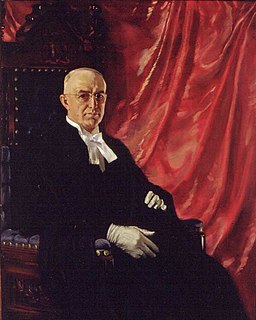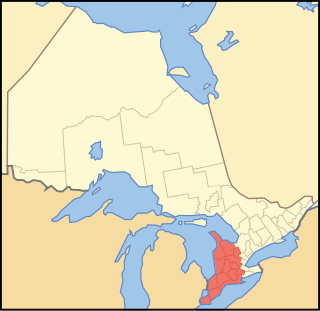
Waterloo is a city in Ontario, Canada. It is the smallest of three cities in the Regional Municipality of Waterloo, and is adjacent to the city of Kitchener.

The University of Waterloo is a public research university with a main campus in Waterloo, Ontario, Canada. The main campus is on 404 hectares of land adjacent to "Uptown" Waterloo and Waterloo Park. The university offers academic programs administered by six faculties and ten faculty-based schools. The university also operates three satellite campuses and four affiliated university colleges. Waterloo is a member of the U15, a group of research-intensive universities in Canada. The University of Waterloo is most famous for its cooperative education (co-op) programs, which allow the students to integrate their education with applicable work experiences. The university operates the largest post-secondary co-operative education program in the world, with over 20, 000 undergraduate students in over 140 co-operative education programs.

Kitchener is a city in the Regional Municipality of Waterloo, Ontario. Located approximately 100 km (62 mi) west of Toronto, Kitchener is the regional seat. It was called the Town of Berlin from 1854 until 1912 and the City of Berlin from 1912 until 1916.

Cambridge is a city located in Southern Ontario at the confluence of the Grand and Speed rivers in the Regional Municipality of Waterloo, Ontario, Canada. It was formed in 1973 by the amalgamation of Galt, Preston, Hespeler, the settlement of Blair and a small portion of surrounding townships.

The Regional Municipality of Waterloo is a regional municipality located in Southern Ontario, Canada. It consists of the cities of Cambridge, Kitchener and Waterloo, and the townships of North Dumfries, Wellesley, Wilmot and Woolwich. It is often referred to as the Region of Waterloo or Waterloo Region. The region is 1,369 square kilometres in size and its regional seat of government is in Kitchener.
The Canadian Federation of Engineering Students (CFES) is the national association of undergraduate engineering student societies in Canada and exists to organize activities, provide services and interact with professional and other bodies at the national and international level for the benefit of Canadian engineering students. The organization is a bilingual non-profit corporation based in Ottawa, Ontario, Canada, managed by a volunteer team of engineering students and recent graduates from across Canada.

Grand River Hospital is a 567-bed hospital serving Waterloo Region, Ontario, Canada, and surrounding communities, primarily through its KW and Freeport Sites, both located in Kitchener. The two sites were independent hospitals that merged to form Grand River Hospital in April 1995.

Norman Otto Hipel was a Canadian politician, noted for his service as Minister of Labour for Ontario in the cabinet of Mitchell Hepburn. He served as MLA for Waterloo South.

Southwestern Ontario is a secondary region of Southern Ontario in the Canadian province of Ontario. It occupies most of the Ontario Peninsula bounded by Lake Huron, including Georgian Bay, to the north and northwest; the St. Clair River, Lake St. Clair, and Detroit River, to the west; and Lake Erie to the south. To the east, on land, Southwestern Ontario is bounded by Central Ontario and the Golden Horseshoe. The region had a population of 2,583,544 in 2016.
Waterloo North was a federal electoral district represented in the House of Commons of Canada from 1867 to 1968. It was located in the province of Ontario. It was created by the British North America Act of 1867 which entitled each of north and south ridings of the County of Waterloo to elect one Member of Parliament.
Waterloo South was a federal electoral district and a provincial electoral district in Canada.
Kitchener was a federal electoral district represented in the House of Commons of Canada from 1968 to 1997. It was located in the province of Ontario. This riding was created in 1966 from parts of Waterloo North and Waterloo South ridings.

Waterloo is a federal electoral district in the Waterloo Region of Ontario, Canada, that was represented in the House of Commons of Canada from 1968 to 1997 and that is again represented in the House of Commons since the 2015 federal election as a result of the Canadian federal electoral redistribution, 2012.
Wellington—Grey, renamed Wellington—Grey—Dufferin—Waterloo in 1970, was a federal electoral district represented in the House of Commons of Canada from 1968 to 1979. It was located in the province of Ontario. This riding was created in 1966 from parts of Dufferin—Simcoe, Grey—Bruce, Waterloo North, Wellington South and Wellington—Huron ridings.
Perth—Wellington—Waterloo was a federal electoral district represented in the House of Commons of Canada from 1988 to 1997. It was located in the province of Ontario. This riding was created in 1987 from parts of Perth, Waterloo and Wellington—Dufferin—Simcoe ridings.
Waterloo—Wellington was a federal electoral district represented in the House of Commons of Canada from 1997 to 2003. It continued to be a provincial electoral district represented in the Legislative Assembly of Ontario until the 2007 provincial election.

Doon Heritage Village is located at the Waterloo Region Museum and is open seasonally from May to December. The Waterloo Region Museum is open daily throughout the year, while the village is not open weekends in September, October and November. Doon Heritage Village is a picturesque 60 acre living history village that shows visitors what life was like in Waterloo Region in the year 1914. The Waterloo Region Museum, opened in 2010, was designed by Moriyama + Teshima Architects.










